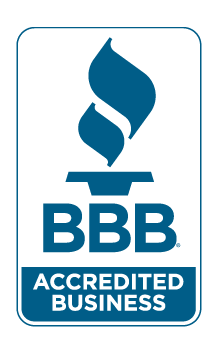When it comes to selling life insurance, there are essentially two routes to consider – the well-trodden path of the captive agent or the expansive horizon of the independent agent. Each road has its unique landscapes and potential pitfalls. Let’s journey through both to help steer your career decision.
Embracing the Captive Lane
Being a captive agent is like cruising down a familiar lane, under the banner of big names like Northwestern Mutual or New York Life. On this road, you get a deep dive into a specific product suite, which often leads to a more profound expertise. Everything is streamlined. From one rulebook to navigate to a simplified process, there's a clear route. Moreover, the massive brand campaigns of these giants amplify your reach, giving you a sort of reflective glow. It’s comforting to have systems tailor-made for sales and service. Plus, there are those added perks like health benefits. But it's not all smooth sailing. You're restricted to a limited menu of offerings, which can sometimes make it hard to fit unique client needs. Also, if you ever decide to switch lanes and go independent, you might have to bid adieu to your renewal income.
Navigating the Independent Highway
The independent Agent route? Think of it as a multi-lane highway. You have the freedom to align with various insurance brands, usually facilitated by an insurance marketing organization (IMO). This route grants you a certain autonomy, allowing you to choose carriers that fit your client's needs best. You get to be the unbiased advisor, with no particular brand leaning. It's a journey that might even let you pocket higher commissions. Plus, you're not just an agent; you're an entrepreneur with a chance to explore new markets. But with freedom comes responsibility. The challenge of juggling multiple carriers can be likened to administrative gymnastics. It's not easy being a master of all trades, and sometimes, you might find yourself grappling with ever-evolving product suites.
When you embark on the journey of independence in the insurance arena, you're not merely changing lanes — you're stepping into the shoes of a business mogul. You're not just an agent tethered to a desk; you're the visionary behind an enterprise. Let’s dive deeper into this transformation.
Charting the Transition
Considering the leap from being a captive agent to an independent one? The shift is more than just a career move; it’s a personal journey. Start with a moment of introspection. Do you find solace in the security of the known, or does the allure of the uncharted pull at your heartstrings? Your answer will shape your trajectory.
Once your heart and mind are in sync, the real work begins. Plunge headfirst into researching carrier options, and align with those that mirror your aspirations. Picking the right Insurance Marketing Organization (IMO) is pivotal. You'll want a partner that not only provides access to multiple carriers but also offers unwavering support as you navigate the independent seas.
And as you transition, your brand might call for a revamp. This could range from updating your website to redefining your service offerings. It’s akin to repainting your business facade, ensuring it truly represents the new you.
- Mastering Product Terrain: The world of independent insurance is vast, with myriad products and tools to get acquainted with. Dive deep into the offerings of various carriers. Understand the intricacies of each policy and stay updated with agent resources. In this dynamic landscape, knowledge is your compass.
- Streamlining Digital Interactions: Today's insurance world thrives on digital efficiency. Ensure you’re integrated with essential carrier platforms. Such digital synergies don’t just elevate client experiences but also boost your operational efficiency, making real-time tracking and support a breeze.
- Charting Your Financial Map: As a business owner, foresight is essential. How will you source insurance leads? What budgetary allocations will sustain and grow your venture? Proper planning can be the difference between merely floating and truly sailing in the business seas.
- Embracing the Learning Curve: Transitioning to independence is a journey filled with challenges, from understanding administrative nuances to decoding market dynamics. But remember, turbulence is a part of any significant journey. Your dedication, commitment to continuous learning, and perseverance will be your guiding stars.
Legacy: Crafting Independent Legacies
At Legacy, we're not just about navigating the independent route; we're about paving new ones. We simplify product quoting, handpick lead vendors to align with your aspirations, and offer personalized mentoring. Our training spans from basic to advanced markets, and we're always there to guide you, even for big-ticket case handling.
Stepping into the world of independent life insurance may feel overwhelming, but with the right guidance, tools, and mindset, it becomes a journey where every mile is worth the ride. With Legacy by your side, let's craft a journey that leaves a lasting mark.





